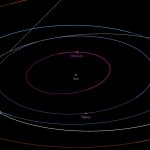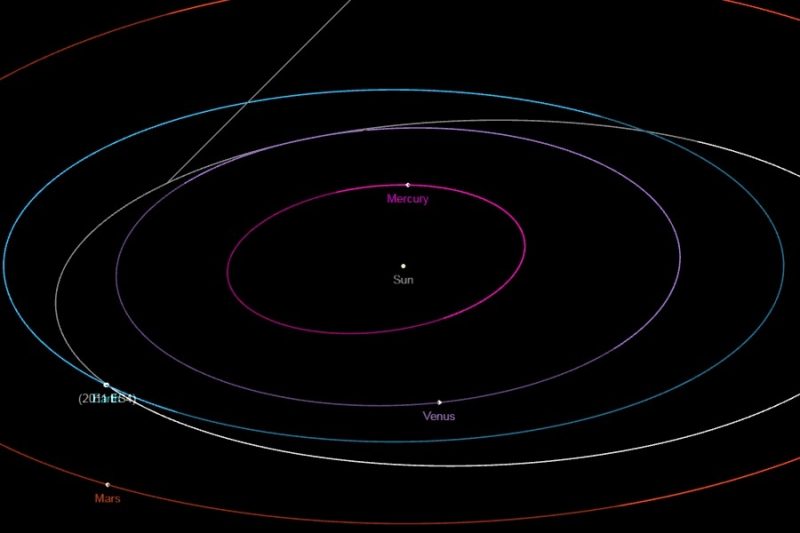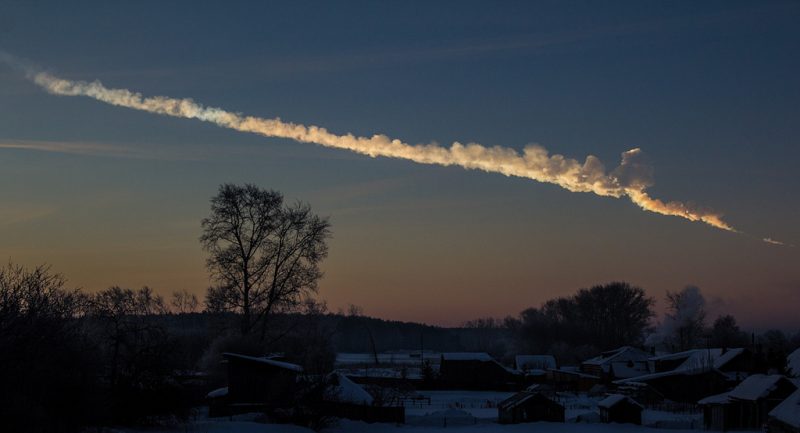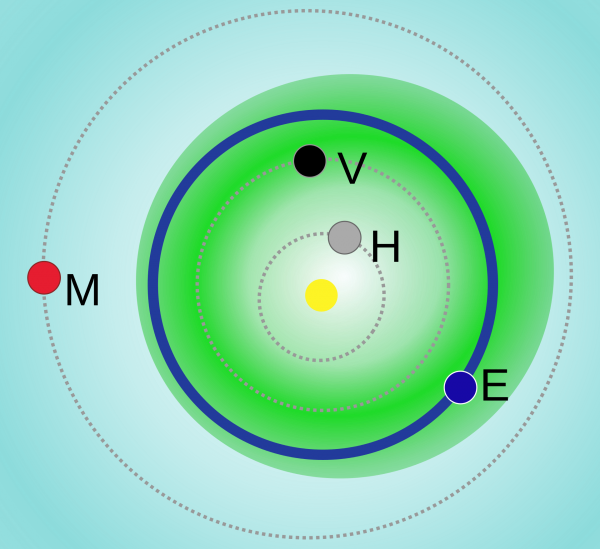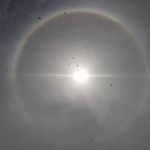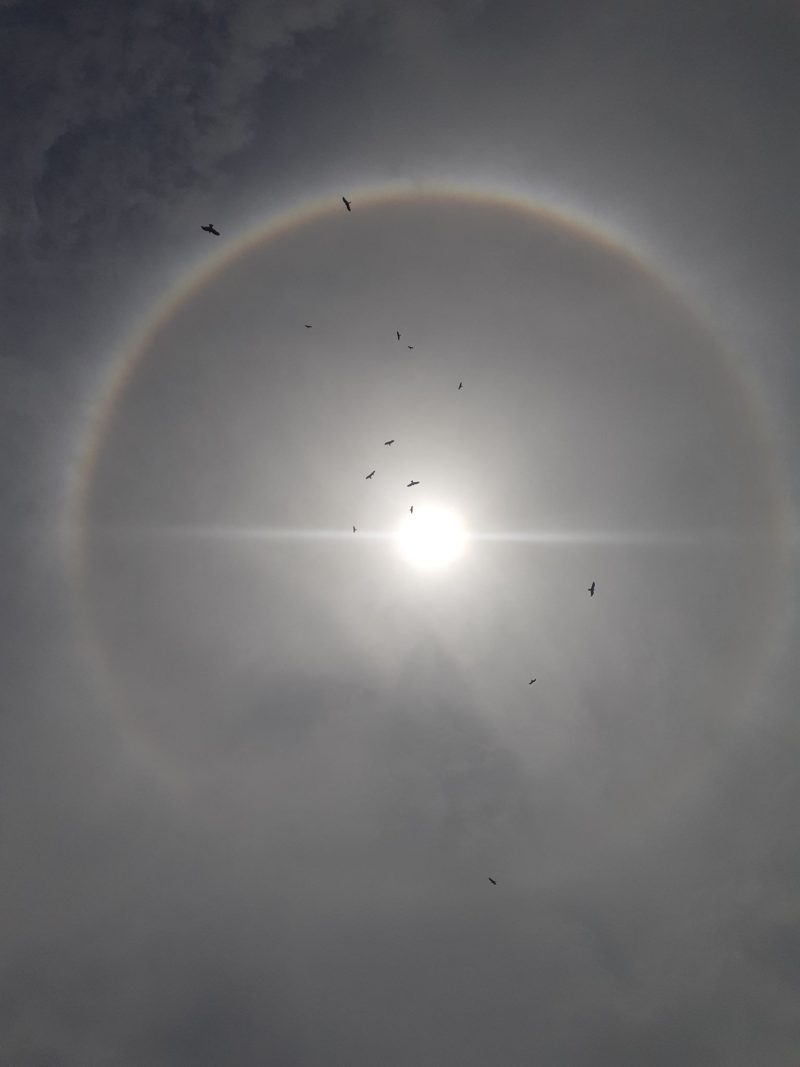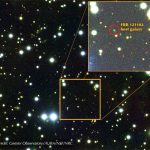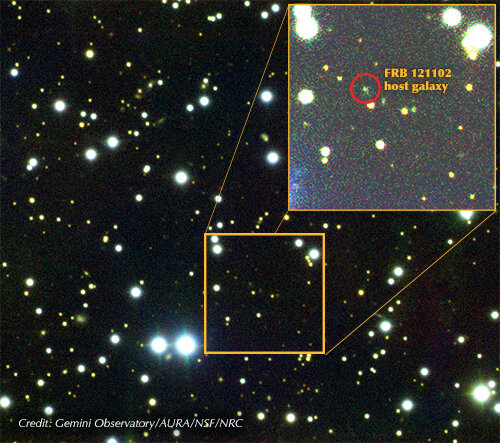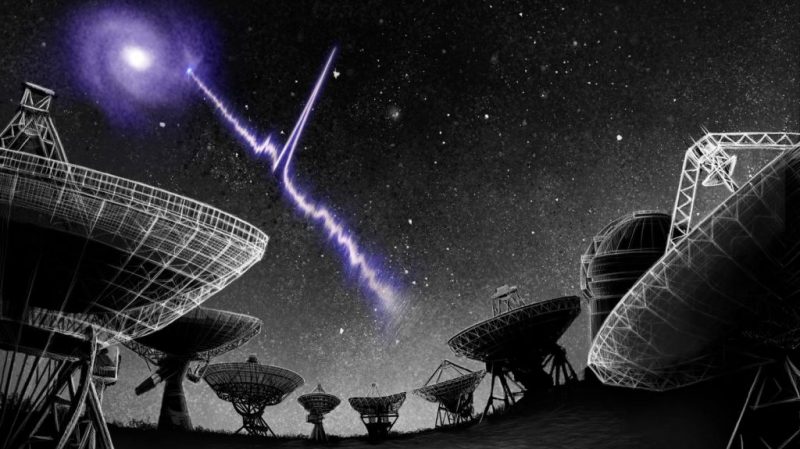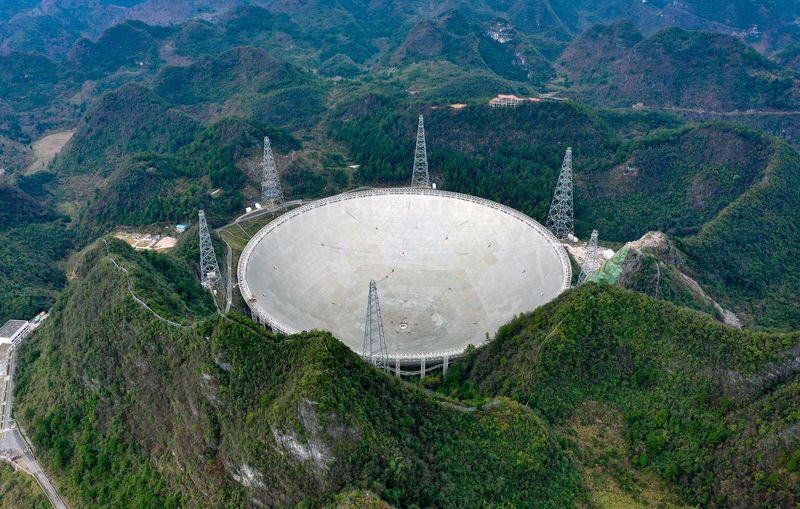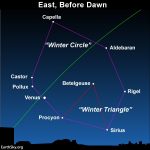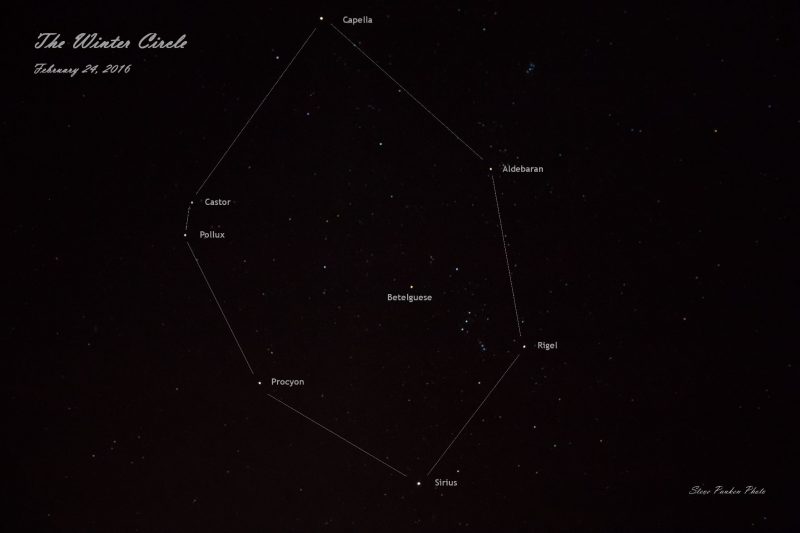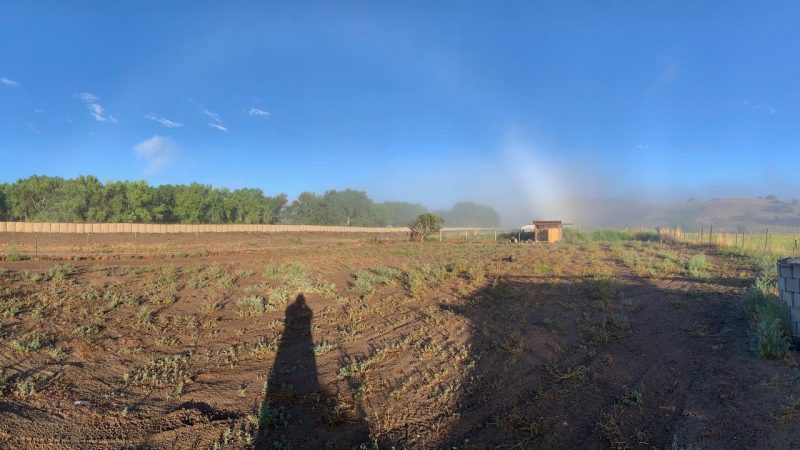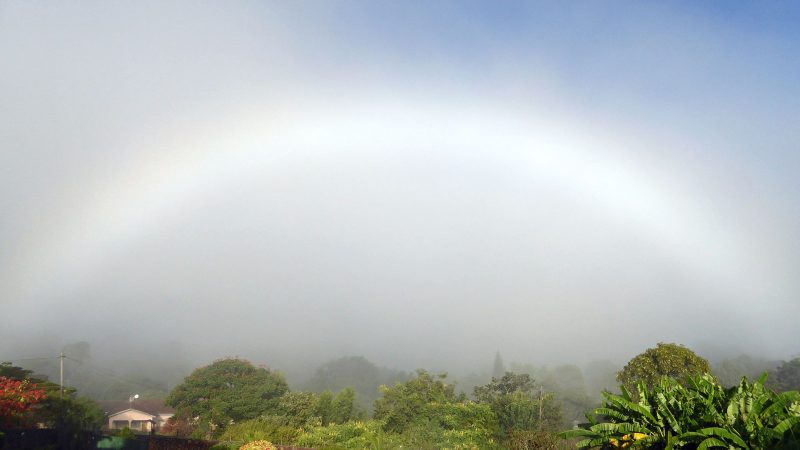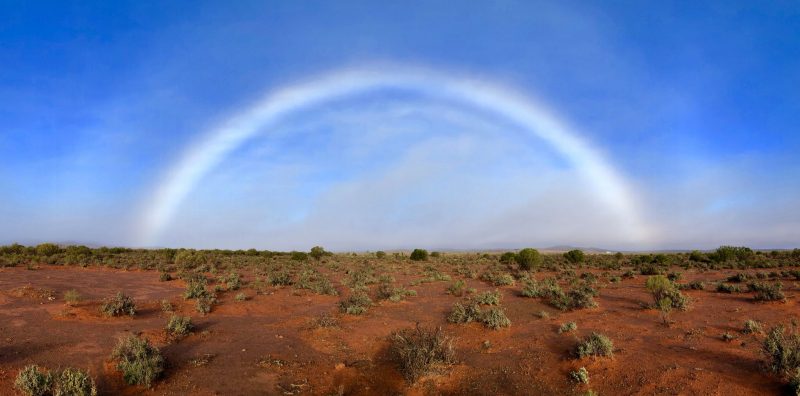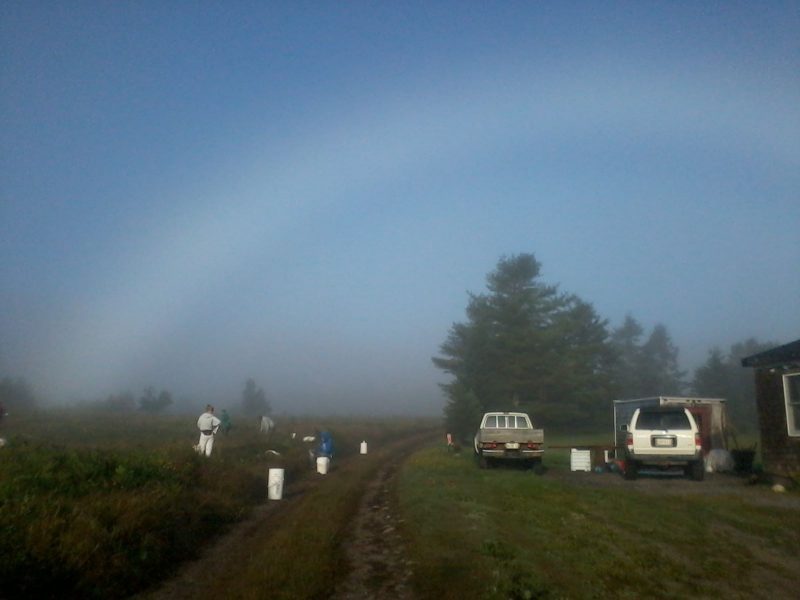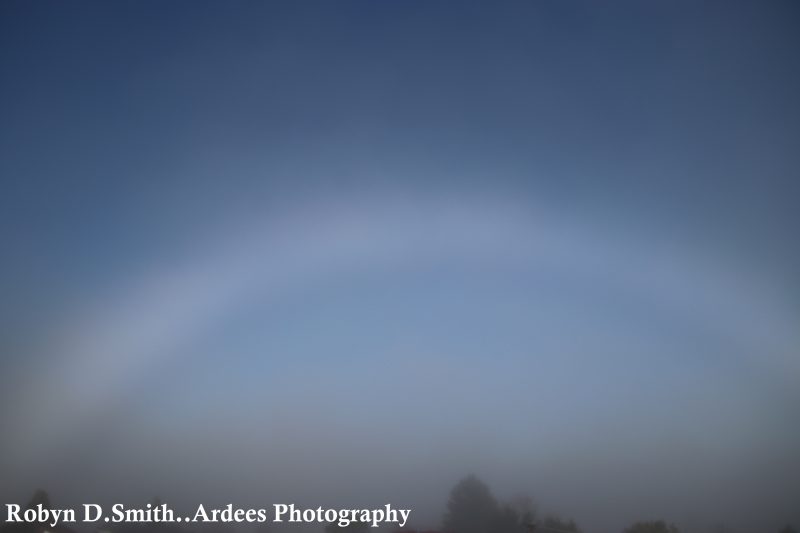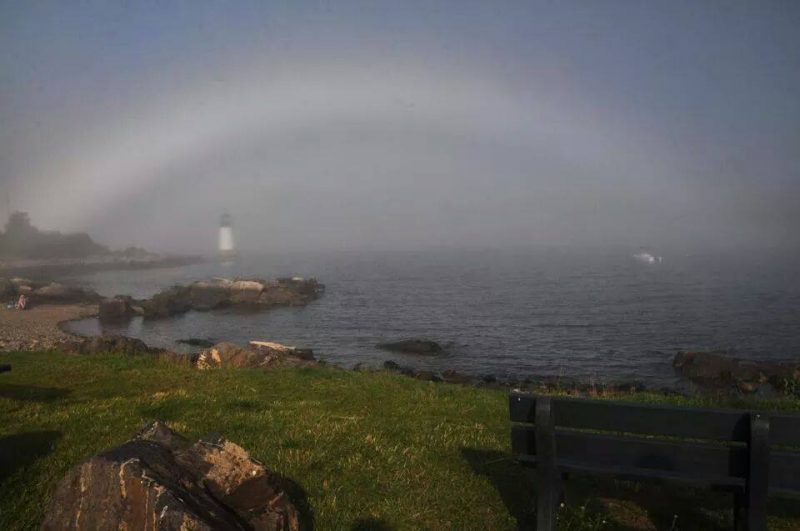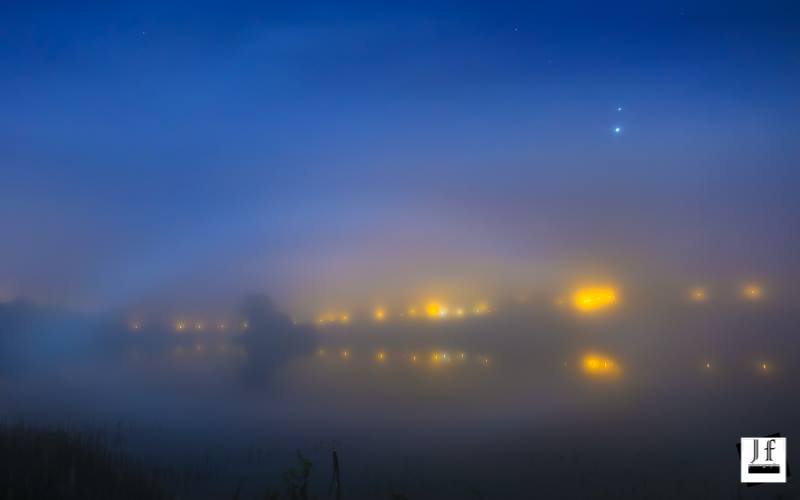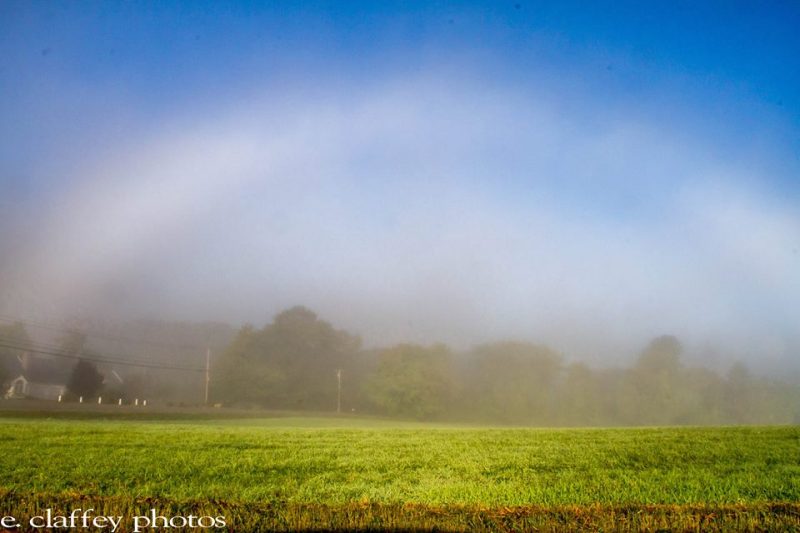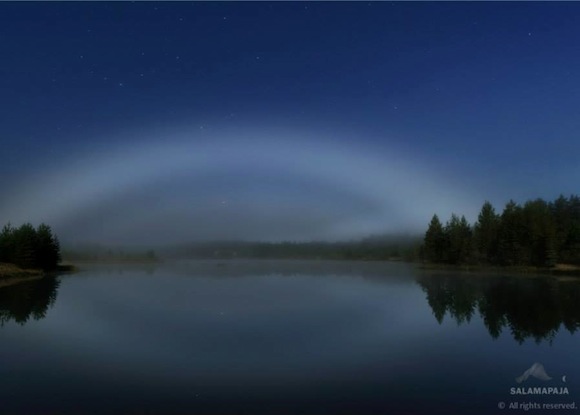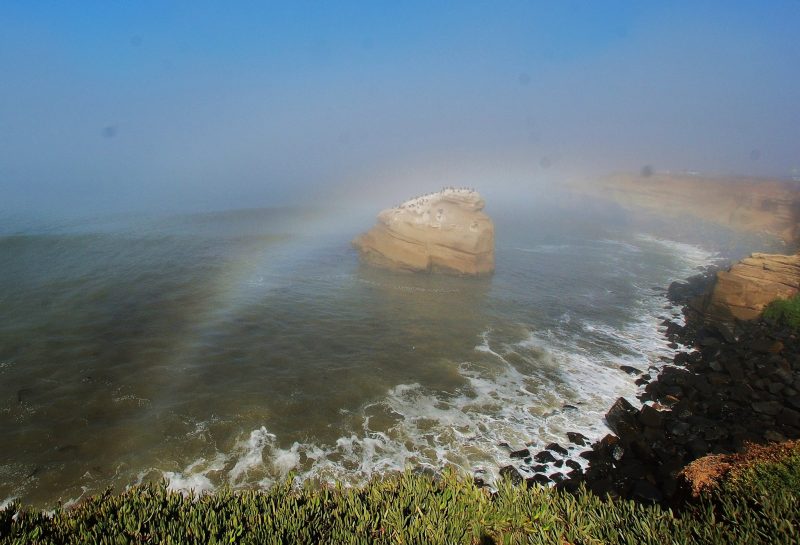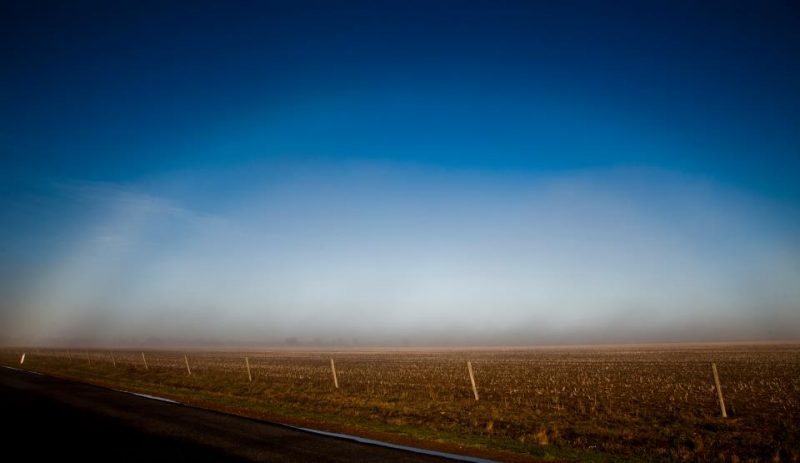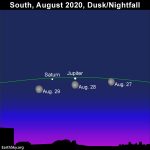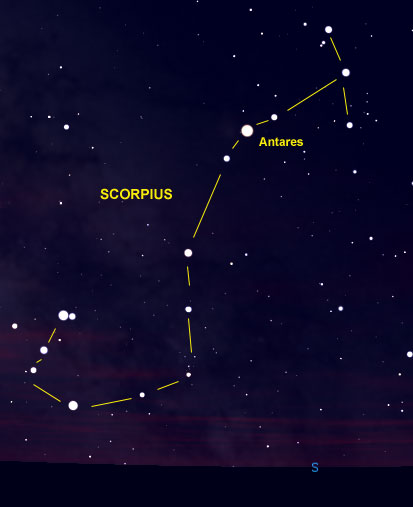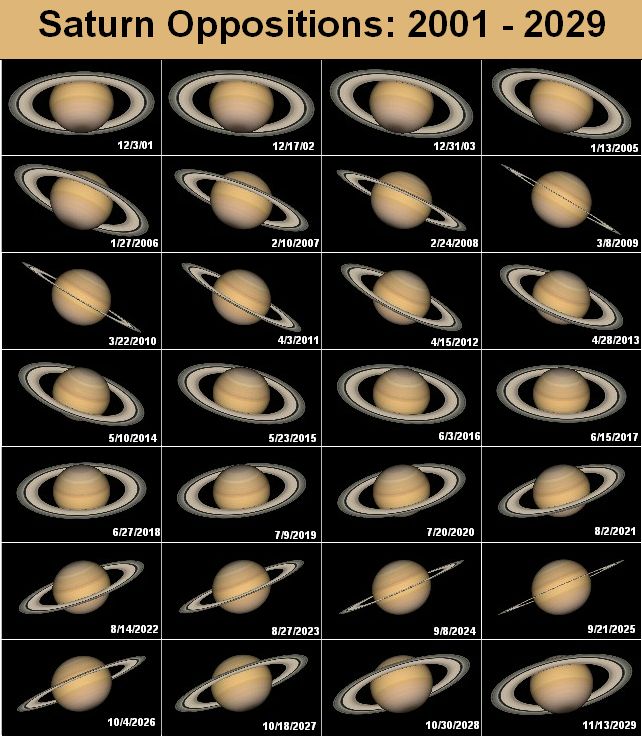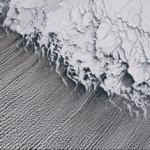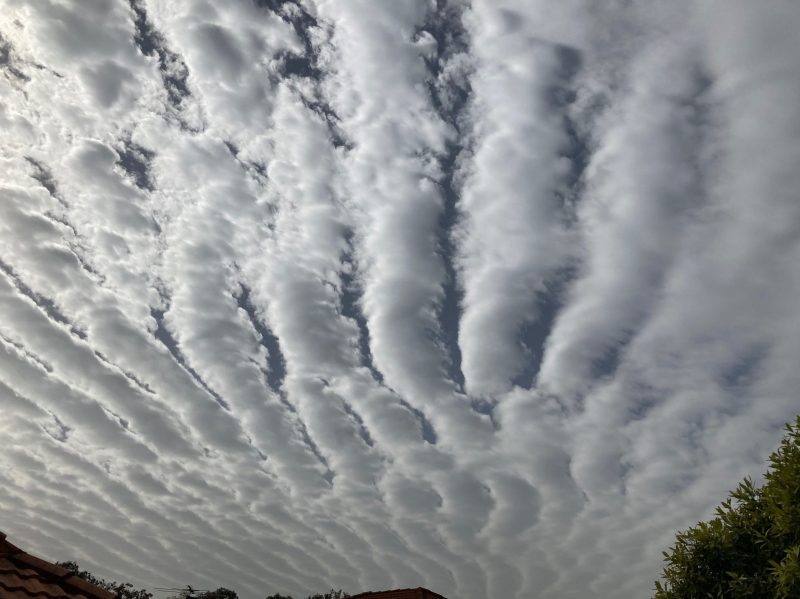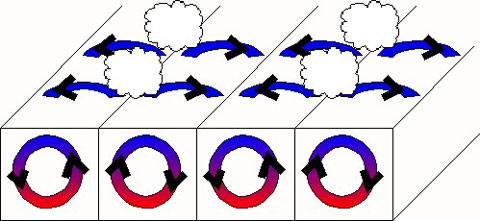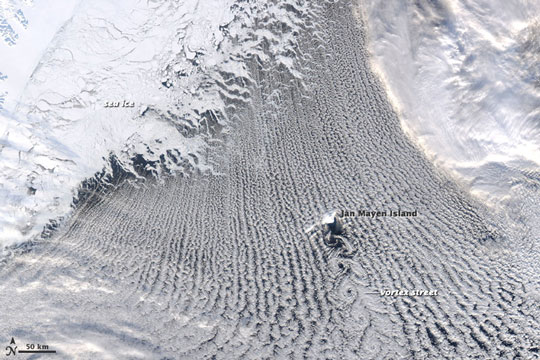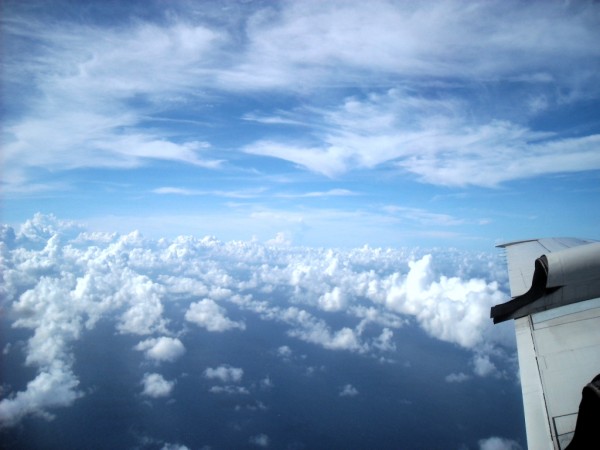
Click the name of a planet to learn more about its visibility in September 2020: Jupiter, Saturn, Mars, Venus, Mercury
Try Stellarium for a precise view of the planets from your location.
Want precise planet rise and set times? Click here for recommended almanacs
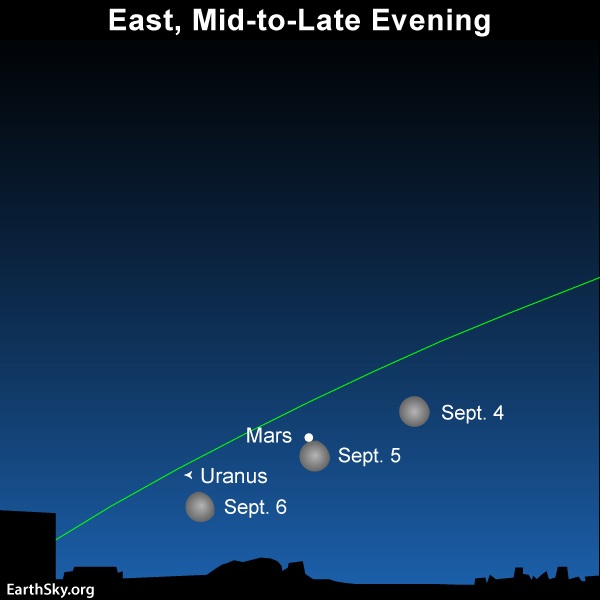
Don’t miss the moon’s sweep past the red planet Mars on September 4, 5 and 6, 2020. Earth will pass between Mars and the sun in October, and, for a month or so, Mars will be even brighter than Jupiter. Mars is the planet to watch this month and next! Read more.

Watch for the waning crescent moon to shine in the vicinity of the brightest planet, Venus, before sunrise on September 13, 14 and 15, 2020. Read more.
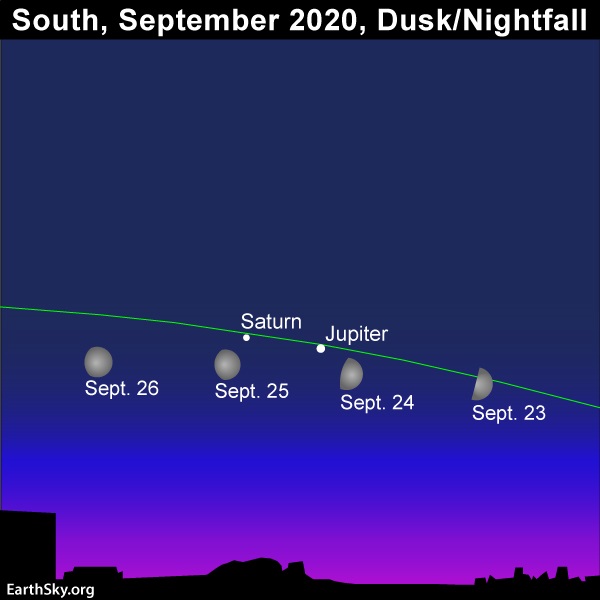
Look for the waxing gibbous moon near the planets Jupiter and Saturn for several days, centered around September 24 and 25, 2020. Read more.

This chart is for the Southern Hemisphere, where people will enjoy the best evening apparition of Mercury for the year in September 2020. As seen from the Northern Hemisphere, Mercury will be deeply submerged in evening twilight and hard to see. Read more.
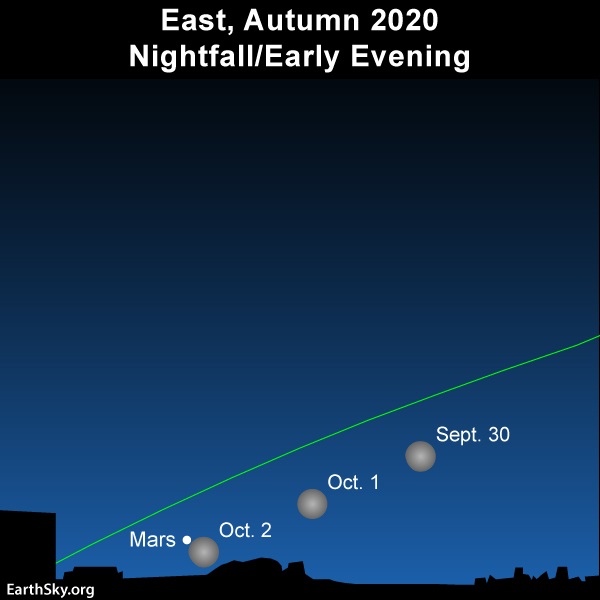
In late September and early October 2020, the Northern Hemisphere’s Harvest Moon shines in the vicinity of the brilliant red planet Mars! Read more.
Jupiter and Saturn are the planets to watch as darkness falls in September 2020. They are near one another on the sky’s dome, with Saturn following Jupiter westward across the sky from dusk/nightfall until well after midnight. A few months ago, in July 2020, these gas giant worlds, Jupiter and Saturn, reached their yearly opposition.
Earth – in its yearly orbit – swung between these outer worlds and the sun in July 2020. Thus we were closest to Jupiter and Saturn for the year in July. Jupiter and Saturn, in turn, shone at their brightest best and were out all night long.
Read more: Jupiter at opposition on July 13-14
Read more: Saturn at opposition on July 20
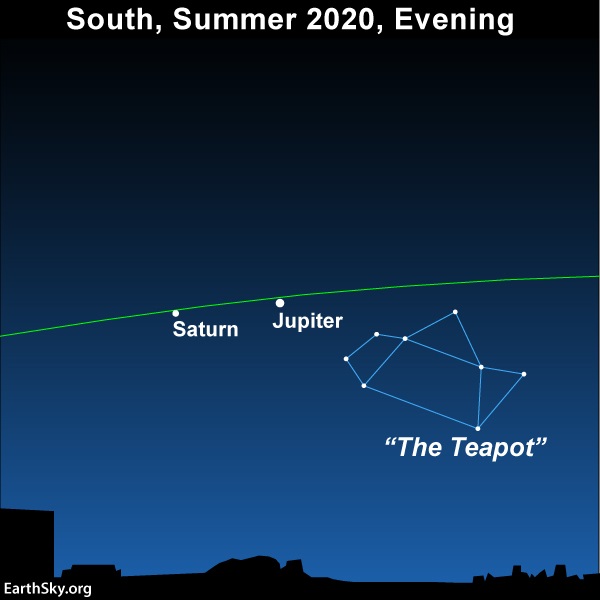
Jupiter and Saturn climb highest up for the night at early evening in early September, and at nightfall by the month’s end. Read more.
In some respects, though, September gives us a better month than July or August for viewing Jupiter and Saturn. That’s because these two worlds remain bright and beautiful throughout September, yet appear highest up for the night right around nightfall.
That’s good news for people with telescopes who don’t want to stay up late. It’s quite convenient to have Jupiter and Saturn highest up for the night as soon as darkness falls. Typically, the view of Jupiter’s four major moons and Saturn’s glorious rings through the telescope is sharper when these worlds are higher up than lower down. The thickness of the Earth’s atmosphere near the horizon tends to blur the view of Jupiter’s moon and Saturn’s rings.
Positions of Jupiter’s moons via Sky & Telescope
Look first for brilliant Jupiter; Saturn is the bright object immediately to Jupiter’s east. Although Saturn is easily as bright as a 1st-magnitude star – as bright as the brightest stars in our sky – the ringed planet can’t compete with the the king planet Jupiter, which outshines Saturn by some 14 times. After all, Jupiter ranks as the fourth brightest celestial object, after the sun, the moon and the planet Venus, respectively.
For the first time since the year 2000, Jupiter and Saturn will showcase their great conjunction in December 2020, for the closest Jupiter-Saturn conjunction since the year 1623. Astronomers use the word conjunction to describe meetings of planets and other objects on our sky’s dome. They use the term great conjunction to describe a meeting of the king planet Jupiter and golden Saturn. The last great Jupiter-Saturn conjunction was May 28, 2000. The next one will be December 21, 2020. But September 2020 presents a fine time to start watching these worlds.
Read more: Before 2020 ends, a great conjunction for Jupiter and Saturn
Watch for the moon in the neighborhood of Jupiter and Saturn for several days, centered on or near September 24.
Mars rises over your eastern horizon by early-to-mid evening, and is coming up earlier daily, heading for its own opposition on October 13, 2020. At that wondrous time, Mars will actually supplant Jupiter as the sky’s fourth-brightest celestial body, after the sun, moon, and the planet Venus. That will be something to see!
In September 2020, you’ll find Mars heading toward that dramatic brightening. This month, Mars is respectably bright, more brilliant even than a 1st-magnitude star, or one of the sky’s brightest stars. Earth is now rushing along in its smaller, faster orbit, gaining on Mars, the fourth planet outward from the sun. Throughout September and the first half of October, watch for Mars to brighten dramatically as Earth closes in on Mars, passing between it and the sun on October 13, 2020.
Around the world, Mars rises about 9 p.m. (10 p.m. daylight saving time) in early September. By the month’s end, Mars will be up around 7 p.m. (8 p.m. daylight saving time).
Let the waning moon help guide your eye to Mars for several days, centered on or near September 5.
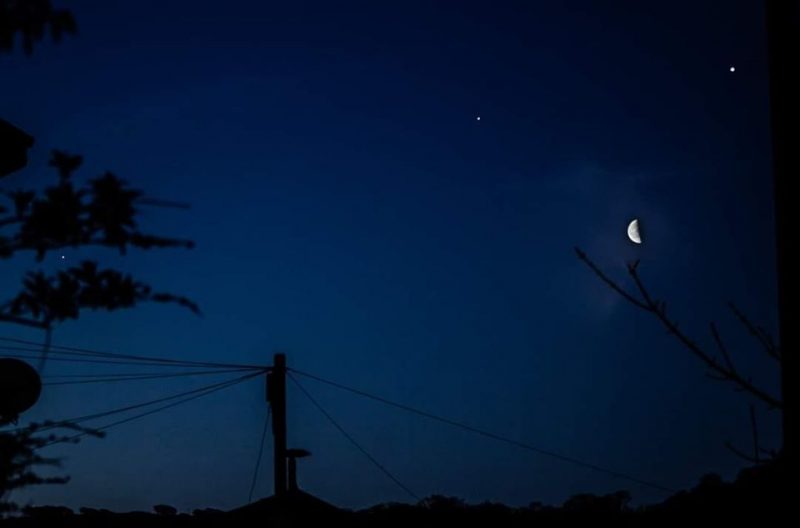
View at EarthSky Community Photos. | From Paul Armstrong, who took this photo of Mars, Saturn and Jupiter on the morning of April 15, 2020, from Exmoor, U.K. Jupiter is at the upper right, Mars at center left, with Saturn between them. In May 2020, Jupiter and Saturn were closer together, whereas Mars was farther away from Jupiter and Saturn. Thanks, Paul!
Venus – the brightest planet – reached its greatest elongation from the sun in the morning sky on August 12 or 13 (depending upon your time zone). But dazzling Venus will remain bright and beautiful as a morning “star” for the rest of this year.
At mid-northern latitudes, Venus rises about 3 1/2 hours before the sun throughout September.
At and near the equator, Venus rises 3 hours before the sun in early September, decreasing to 2 1/2 hours near the month’s end.
At temperate latitudes in the Southern Hemisphere, Venus rises about 2 1/2 hours before the sun in early September, tapering to 1 3/4 hours by the month’s end.
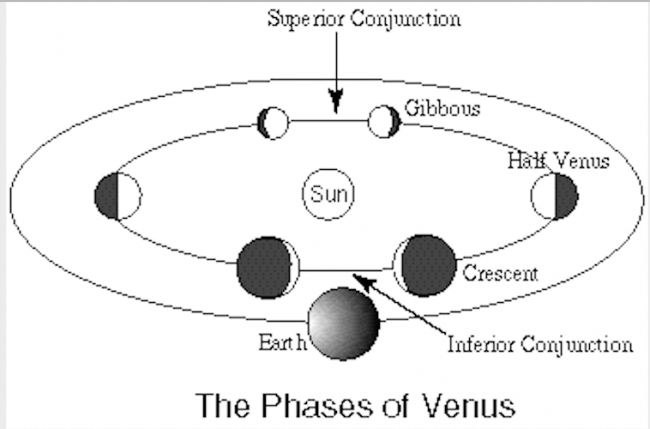
Inferior conjunction – when Venus sweeps between the sun and Earth – happened on June 3, 2020. Some 10 weeks later, Venus reached its greatest elongation in the morning sky on August 13, 2020 (when its disk was about 50% illuminated by sunshine). In September 2020, Venus will start the month about 60% illuminated and then end the month about 71% illuminated. Image via UCLA.
Throughout September, Venus in its faster orbit around the sun will be going farther and farther away from Earth. As viewed through the telescope, Venus’ waxing gibbous phase will widen, yet its overall disk size will shrink. Venus’ disk is 60% illuminated in early September, and 71% illuminated by the month’s end; Venus’ angular diameter, on the other hand, will shrink to 80% of its initial size by late September.
Watch for the waning crescent moon to shine with Venus in the morning sky for several days, centered on or near September 14.
Mercury is an evening planet all month long, though only nominally so at northerly latitudes. September 2020 showcases the best evening apparition of Mercury for the year in the Southern Hemisphere. Mercury will be a whopping 25 degrees east of the sun from September 26 till October 7, 2020. and at its greatest elongation on October 1.
Read more: Mercury in the west after sunset
What do we mean by bright planet? By bright planet, we mean any solar system planet that is easily visible without an optical aid and that has been watched by our ancestors since time immemorial. In their outward order from the sun, the five bright planets are Mercury, Venus, Mars, Jupiter and Saturn. These planets actually do appear bright in our sky. They are typically as bright as – or brighter than – the brightest stars. Plus, these relatively nearby worlds tend to shine with a steadier light than the distant, twinkling stars. You can spot them, and come to know them as faithful friends, if you try.
Bottom line: September 2020 presents 4 of the 5 bright solar system planets in the evening sky (Mercury only nominally so at northerly latitudes). Catch Jupiter and Saturn at nightfall, Mars at early evening, and Venus in the predawn/dawn sky.
Don’t miss anything. Subscribe to EarthSky News by email
Visit EarthSky’s Best Places to Stargaze, and recommend a place we can all enjoy.
Help EarthSky keep going! Donate now.
Post your planet photos at EarthSky Community Photos
from EarthSky https://ift.tt/1YD00CF

Click the name of a planet to learn more about its visibility in September 2020: Jupiter, Saturn, Mars, Venus, Mercury
Try Stellarium for a precise view of the planets from your location.
Want precise planet rise and set times? Click here for recommended almanacs

Don’t miss the moon’s sweep past the red planet Mars on September 4, 5 and 6, 2020. Earth will pass between Mars and the sun in October, and, for a month or so, Mars will be even brighter than Jupiter. Mars is the planet to watch this month and next! Read more.

Watch for the waning crescent moon to shine in the vicinity of the brightest planet, Venus, before sunrise on September 13, 14 and 15, 2020. Read more.

Look for the waxing gibbous moon near the planets Jupiter and Saturn for several days, centered around September 24 and 25, 2020. Read more.

This chart is for the Southern Hemisphere, where people will enjoy the best evening apparition of Mercury for the year in September 2020. As seen from the Northern Hemisphere, Mercury will be deeply submerged in evening twilight and hard to see. Read more.

In late September and early October 2020, the Northern Hemisphere’s Harvest Moon shines in the vicinity of the brilliant red planet Mars! Read more.
Jupiter and Saturn are the planets to watch as darkness falls in September 2020. They are near one another on the sky’s dome, with Saturn following Jupiter westward across the sky from dusk/nightfall until well after midnight. A few months ago, in July 2020, these gas giant worlds, Jupiter and Saturn, reached their yearly opposition.
Earth – in its yearly orbit – swung between these outer worlds and the sun in July 2020. Thus we were closest to Jupiter and Saturn for the year in July. Jupiter and Saturn, in turn, shone at their brightest best and were out all night long.
Read more: Jupiter at opposition on July 13-14
Read more: Saturn at opposition on July 20

Jupiter and Saturn climb highest up for the night at early evening in early September, and at nightfall by the month’s end. Read more.
In some respects, though, September gives us a better month than July or August for viewing Jupiter and Saturn. That’s because these two worlds remain bright and beautiful throughout September, yet appear highest up for the night right around nightfall.
That’s good news for people with telescopes who don’t want to stay up late. It’s quite convenient to have Jupiter and Saturn highest up for the night as soon as darkness falls. Typically, the view of Jupiter’s four major moons and Saturn’s glorious rings through the telescope is sharper when these worlds are higher up than lower down. The thickness of the Earth’s atmosphere near the horizon tends to blur the view of Jupiter’s moon and Saturn’s rings.
Positions of Jupiter’s moons via Sky & Telescope
Look first for brilliant Jupiter; Saturn is the bright object immediately to Jupiter’s east. Although Saturn is easily as bright as a 1st-magnitude star – as bright as the brightest stars in our sky – the ringed planet can’t compete with the the king planet Jupiter, which outshines Saturn by some 14 times. After all, Jupiter ranks as the fourth brightest celestial object, after the sun, the moon and the planet Venus, respectively.
For the first time since the year 2000, Jupiter and Saturn will showcase their great conjunction in December 2020, for the closest Jupiter-Saturn conjunction since the year 1623. Astronomers use the word conjunction to describe meetings of planets and other objects on our sky’s dome. They use the term great conjunction to describe a meeting of the king planet Jupiter and golden Saturn. The last great Jupiter-Saturn conjunction was May 28, 2000. The next one will be December 21, 2020. But September 2020 presents a fine time to start watching these worlds.
Read more: Before 2020 ends, a great conjunction for Jupiter and Saturn
Watch for the moon in the neighborhood of Jupiter and Saturn for several days, centered on or near September 24.
Mars rises over your eastern horizon by early-to-mid evening, and is coming up earlier daily, heading for its own opposition on October 13, 2020. At that wondrous time, Mars will actually supplant Jupiter as the sky’s fourth-brightest celestial body, after the sun, moon, and the planet Venus. That will be something to see!
In September 2020, you’ll find Mars heading toward that dramatic brightening. This month, Mars is respectably bright, more brilliant even than a 1st-magnitude star, or one of the sky’s brightest stars. Earth is now rushing along in its smaller, faster orbit, gaining on Mars, the fourth planet outward from the sun. Throughout September and the first half of October, watch for Mars to brighten dramatically as Earth closes in on Mars, passing between it and the sun on October 13, 2020.
Around the world, Mars rises about 9 p.m. (10 p.m. daylight saving time) in early September. By the month’s end, Mars will be up around 7 p.m. (8 p.m. daylight saving time).
Let the waning moon help guide your eye to Mars for several days, centered on or near September 5.

View at EarthSky Community Photos. | From Paul Armstrong, who took this photo of Mars, Saturn and Jupiter on the morning of April 15, 2020, from Exmoor, U.K. Jupiter is at the upper right, Mars at center left, with Saturn between them. In May 2020, Jupiter and Saturn were closer together, whereas Mars was farther away from Jupiter and Saturn. Thanks, Paul!
Venus – the brightest planet – reached its greatest elongation from the sun in the morning sky on August 12 or 13 (depending upon your time zone). But dazzling Venus will remain bright and beautiful as a morning “star” for the rest of this year.
At mid-northern latitudes, Venus rises about 3 1/2 hours before the sun throughout September.
At and near the equator, Venus rises 3 hours before the sun in early September, decreasing to 2 1/2 hours near the month’s end.
At temperate latitudes in the Southern Hemisphere, Venus rises about 2 1/2 hours before the sun in early September, tapering to 1 3/4 hours by the month’s end.

Inferior conjunction – when Venus sweeps between the sun and Earth – happened on June 3, 2020. Some 10 weeks later, Venus reached its greatest elongation in the morning sky on August 13, 2020 (when its disk was about 50% illuminated by sunshine). In September 2020, Venus will start the month about 60% illuminated and then end the month about 71% illuminated. Image via UCLA.
Throughout September, Venus in its faster orbit around the sun will be going farther and farther away from Earth. As viewed through the telescope, Venus’ waxing gibbous phase will widen, yet its overall disk size will shrink. Venus’ disk is 60% illuminated in early September, and 71% illuminated by the month’s end; Venus’ angular diameter, on the other hand, will shrink to 80% of its initial size by late September.
Watch for the waning crescent moon to shine with Venus in the morning sky for several days, centered on or near September 14.
Mercury is an evening planet all month long, though only nominally so at northerly latitudes. September 2020 showcases the best evening apparition of Mercury for the year in the Southern Hemisphere. Mercury will be a whopping 25 degrees east of the sun from September 26 till October 7, 2020. and at its greatest elongation on October 1.
Read more: Mercury in the west after sunset
What do we mean by bright planet? By bright planet, we mean any solar system planet that is easily visible without an optical aid and that has been watched by our ancestors since time immemorial. In their outward order from the sun, the five bright planets are Mercury, Venus, Mars, Jupiter and Saturn. These planets actually do appear bright in our sky. They are typically as bright as – or brighter than – the brightest stars. Plus, these relatively nearby worlds tend to shine with a steadier light than the distant, twinkling stars. You can spot them, and come to know them as faithful friends, if you try.
Bottom line: September 2020 presents 4 of the 5 bright solar system planets in the evening sky (Mercury only nominally so at northerly latitudes). Catch Jupiter and Saturn at nightfall, Mars at early evening, and Venus in the predawn/dawn sky.
Don’t miss anything. Subscribe to EarthSky News by email
Visit EarthSky’s Best Places to Stargaze, and recommend a place we can all enjoy.
Help EarthSky keep going! Donate now.
Post your planet photos at EarthSky Community Photos
from EarthSky https://ift.tt/1YD00CF


